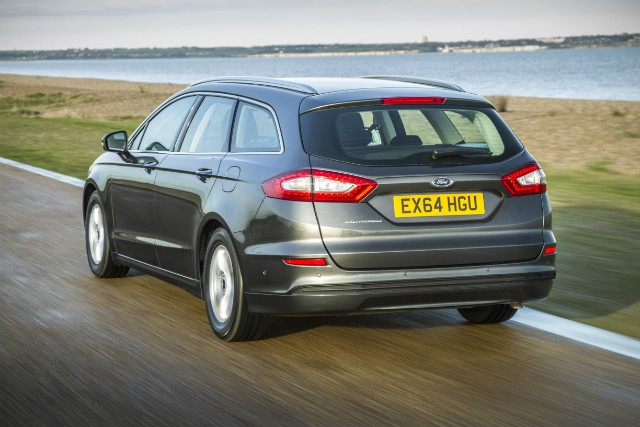The more powerful diesel versions of the latest Ford Mondeo are offered with a choice of manual or PowerShift gearboxes. PowerShift, like the Volkswagen Group's DSG among others, is as near to being an automatic as makes no difference as far as the driver is concerned. But strictly speaking, it's a twin-clutch manual with the ability to decide which gear to select and when.
Complicated as this arrangement may seem, it has several benefits over a conventional automatic. One of these is fuel economy. If the test car - an estate with the 178bhp 2.0-litre diesel engine - had had a manual gearbox, its official combined fuel economy would have been 62.8mpg. With PowerShift, it's 56.5mpg. With a true automatic, it would have been a lot less.
Economy has an almost one-to-one relationship with CO2 emissions. The Powershift car officially emits 130g/km, which isn't so far off the 117g/km of the manual, and again a lot better than an automatic would produce if such a thing existed.
In the past, PowerShift has been criticised for not being as good as DSG, but it's improving. The changes are smooth, standing starts are reasonably refined, and if you want to use the paddles behind the steering wheel to select a gear yourself the response is very quick.
The performance is reasonably lively - Powershift adds three tenths to the 0-62mph time, but the resulting 8.7 seconds is still good enough for most purposes. Ford's recent work on noise suppression means that the engine always sounds muffled, and never seems clattery from the inside even when starting from cold.
The claimed fuel economy is difficult to match. Despite the talk about mpg in the mid-50s, I didn't get much over 40mpg. And that was without pressing the car very hard, because there's little incentive to do so.

Over the last few years, Mondeos have been very sensitive to the size of their wheels. Those in the current range with 16-inch rims ride beautifully, but the optional 19s, like those fitted to our test car, make the ride very uncomfortable even over smaller bumps. Occasionally the car would skip sideways very slightly over these. On the plus side it responded well on smooth roads and never felt as lumbering as more powerful Mondeos have tended to in the past.
Luggage capacity is at 500 litres with the rear seats in place and 1,605 litres when they're folded down. This is somewhat less than in the admittedly more expensive Audi A6 Avant, BMW 5 Series Touring and Mercedes E-Class Estate. It is very much less than in the Skoda Superb Estate.
At £27,165, the Ford is cheaper than the Skoda, and for that money you get quite a lot of kit. Included is sat-nav, DAB digital radio, dual zone climate control and a heated windscreen. The last of these is still a surprisingly rare item in the industry even though Ford has been supplying it for a long time.
You also get an eight-inch touchscreen which has very clear graphics but requires quite firm finger applications. This is better than some systems, where a very slightly missed aim can easily lead to you selecting something you didn't intend to. But I think Ford has gone slightly too far the other way, and a slightly more sensitive arrangement would be better.
The list price doesn't include those 19-inch wheels (a waste of £500 if you ask me), nor the test car's dynamic headlights or leather upholstery. That price also doesn’t include the heated and ten-way adjustable powered seats, Active Park Assist or two important safety items: inflatable rear seatbelts at £175 or Active City Stop at £200.



